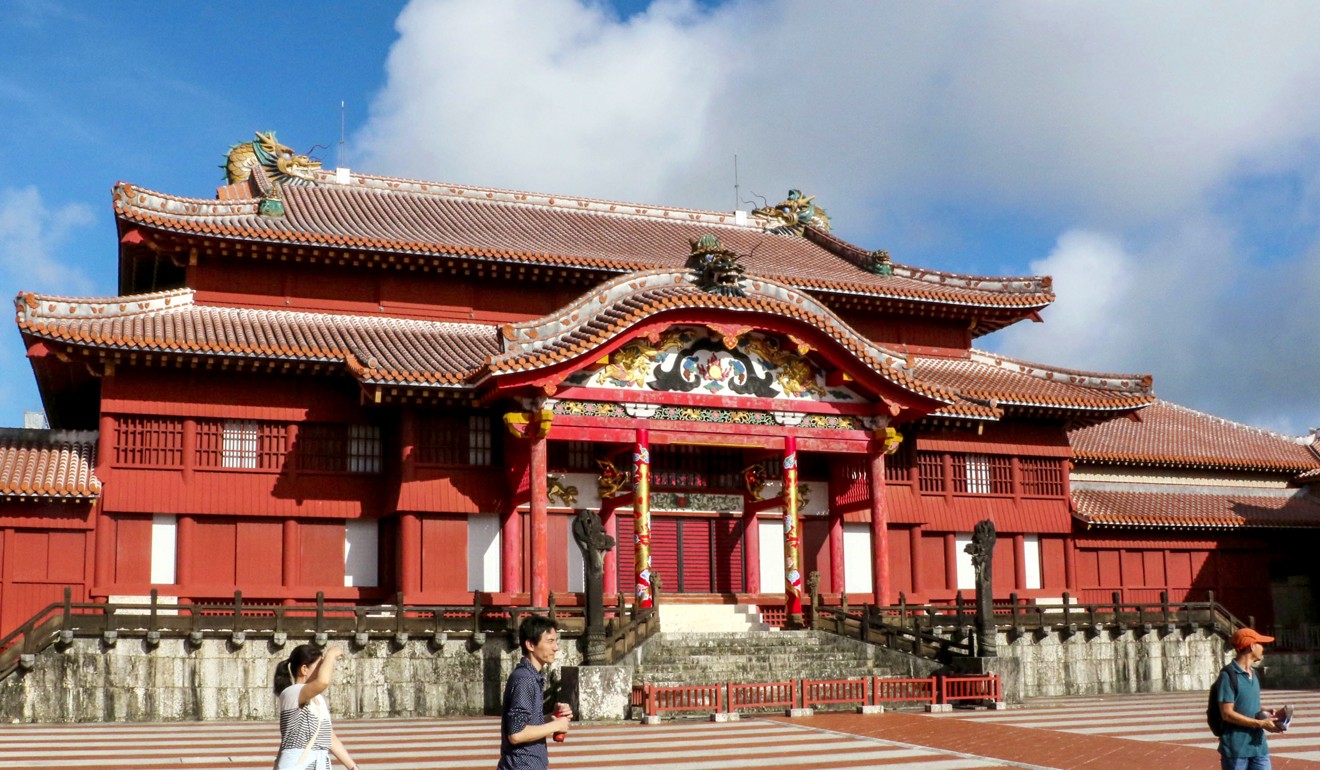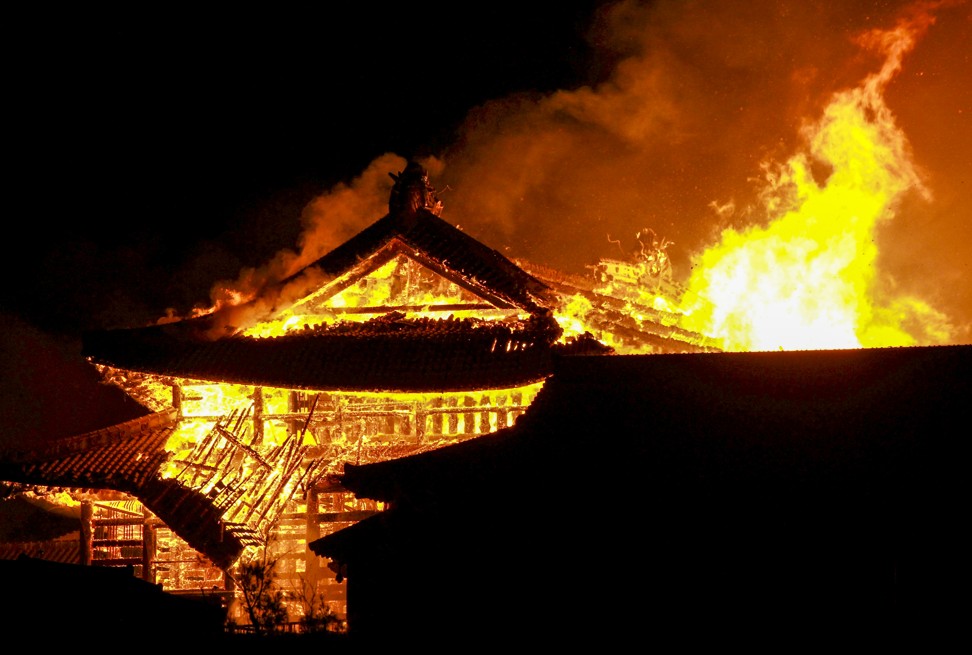
Japanese Unesco-listed castle razed by fire to be rebuilt as 3D digital model using photos and video footage
- Rebuilding Shuri Castle in Okinawa, Japan, which was destroyed by fire in October, will take decades, so a 3D digital reconstruction is planned
- Photos and footage of the Unesco World Heritage Site collected from visitors will be combined to make an interactive model
Rei Kawakami was on a train to the airport after a conference in Seoul in October when she heard the news of the fire engulfing Shuri Castle in Okinawa.
“I’ve been to Shuri Castle and I knew that for the people of Okinawa it was part of life,” said the 39-year-old Japanese associate professor. After reading news reports about students unable to return to school due to the shock of the destruction, Kawakami felt compelled to act.
“I have children and I imagined how overwhelming it would be if they were the ones who experienced this,” said Kawakami, a computer vision specialist in the Graduate School of Information Science and Technology at the University of Tokyo. “I could not bear to do nothing.”
In fact, it was a paper on the virtual reconstruction of Rome, which received an award at the International Conference on Computer Vision in Seoul, that inspired Kawakami to launch Our Shurijo: Shuri Castle Digital Reconstruction, a project to build a 3D digital model of the castle using photographs and video footage contributed online.
The blaze on October 31, suspected to have been caused by an electrical fault, devastated seven wooden buildings occupying over 4,000 square metres on a hill overlooking the prefectural capital, Naha.

“I’ve heard that it will take a long time to reconstruct the castle,” Kawakami said. “I hope our project encourages local people and gives them the energy to move forward.”
Kawakami and her team are aiming to collect a million photographic and video images, which will be sorted and combined with specially written algorithms, culminating in a precise 3D model of the castle that will allow visitors to explore buildings and magnify objects. “We set one million images as our goal because the more we use for the 3D castle, the higher the quality,” Kawakami said.
I’ve heard that it will take a long time to reconstruct the castle. I hope our project encourages local people and gives them the energy to move forward. We set one million images as our goal because the more we use for the 3D castle, the higher the quality
Kawakami contacted Iconem through an acquaintance who is a researcher working with the company. “It fitted our aim … to digitise endangered heritage sites,” said Jonathan Chemla, 27-year-old chief technical officer of the company.
The company specialises in processing a huge volume of pictures, Chemla said, adding he intends to use techniques for Shuri Castle similar to those applied to reconstruct Notre-Dame. “International cooperation is always important to find solutions,” he said.

One of Kawakami’s students, Karin Kiho, 23, who is studying for a master’s degree in computer graphic design, helped to make a video clip for the team’s website. “I went to Shuri Castle in March during a holiday and was shocked when I heard the news,” Kiho said. “Although my specialist area is different, I wanted to cooperate when I saw how hard professor Kawakami was working on this project.”
Since the launch of the project’s website on December 20, the team has received nearly 29,000 images from more than 2,700 people. About 40 per cent of the images came from outside Japan, including mainland China, Taiwan, Thailand and the United States. The team requests contributors include their age, nationality, gender and memories with the images they send, as well as messages that will appear when viewers visit the virtual castle.
Kawakami also hopes that in the future people living in Okinawa, as well as visitors, will be able to explore the digital model of Shuri Castle using virtual-reality goggles or smartphones at the site.
“The digital castle could be used to teach high school students in Okinawa, as well as to attract tourists until the castle is rebuilt,” Kawakami said. “There are issues such as cost, but I will continue to do this project until we make local people happy.”

Among the supporters of the project, Katsushi Ikeuchi, professor emeritus of the University of Tokyo and Kawakami’s former mentor, has pledged to contribute a million yen (US$9,140).
Several companies are taking part in the project, including Sakura Internet, which has provided a server, and Capturing Reality, whose software is being used to combine the images.
Okinawa vice governor Moritake Tomikawa also visited Kawakami in mid-November and offered to support the project, she said.

